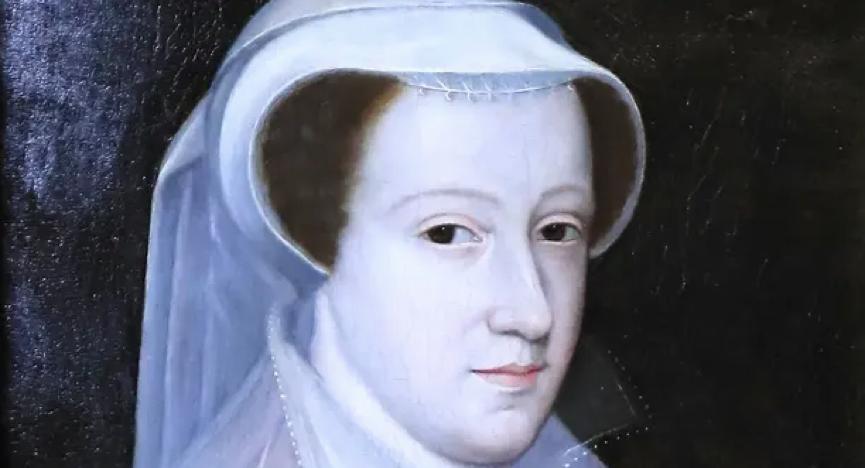Reporter | Xu Yuedong
Recently, the "Unlock History Team" at King's College London, MIT and the University of Glasgow discovered the contents of the last letter written by Mary Queen of Scots before her execution, using elaborate "letterlocking" techniques to ensure that the contents of the letter were not discovered, according to the Guardian.
Mary Stuart (1542-1587), also known as Mary I. She is queen of Scotland and queen of France, known for her beauty. In 1567, she was deposed from the throne and imprisoned by Queen Elizabeth I of England for eighteen years the following year, and finally executed for attempting to murder Elizabeth I at the age of 45.
The researchers found that on February 8, 1587, before her execution, she wrote a letter in French to King Henry III of France, who wrote that she "had been informed of her verdict and that I would be executed like a criminal at eight o'clock in the morning." I asked them to give me paper in order to make a will, and I was never able to take back anything that was useful to me, or even free to write my will. Nor can I decide that my body can be transported to your kingdom as I wish. There, I had the privilege of becoming Queen of France and becoming your sister and ally. The letter is now hidden in the National Library of Scotland.

Mary Queen of Scots
The Unlock history panel found that Mary used an ingenious folding technique to seal the letter. If the letter had been tampered with, the recipient would have been able to find it. This "Unlock history group" has been exploring the history of the "envelope", which was cleverly folded into envelopes by the ancients before the envelope was invented.
Earlier this year, the Unlock history team successfully unwrapped an unopened envelope from 1697, using X-rays to look at the letter's internal information and create 3D images. As part of the study, they looked at nearly 250,000 ancient letters and discovered a folding technique called a "spiral lock." The "lock letter" technology used by Mary, Queen of Scots, belongs to this complex "spiral lock" technology.
The research team believes that "the 'spiral lock' is one of the most compelling letter sealing techniques ... "The content of this letter is very touching, it is not only a letter—a document for distant recipients to read—but also a final will. "The letter had to be folded up and hidden, and after writing the last message, Mary was sealed by the 'lock letter' technique, ready to be delivered to others."
The Unlock History Panel also believes that the process of exploring the "lock letter" technique is very challenging, because the letter that is "locked" is to be "destroyed" by the recipient. Making a "spiral lock" takes more than thirty steps, and sometimes an adhesive, "it's a very complex technique that requires time, patience, and skill: if there's a mistake, the locking mechanism can't be completed, and you have to write a letter again." ”
The last letter from Mary Queen of Scots, picture from the National Library of Scotland
When the recipient receives a letter sealed with "lock letter" technology, he needs to tear the letter open to read the contents. Tearing open the letter will cause the letter to break in many places, so once the letter has been opened, it is impossible to restore it again. Therefore, if someone wants to open the letter and tamper with it, the recipient can easily find it.
Jana Dambrogio, a scholar at the Massachusetts Institute of Technology, believes that the letter was handwritten by Mary in prison, and we have reason to believe that she locked it herself. The letter is of great historical significance to Scotland. Moreover, Mary's use of the most complex "lock letter" technique was a variant of that "lock letter" technique, from which it can be inferred that the tools available to Mary in prison were extremely limited.
A type of "lock letter" technique, image from Wikipedia
Daniel Starza Smith, an academic at King's College London, said: "The envelope is one of the most important communication technologies in the world, but its history has only just been excavated. "In the six hundred years before the invention of modern glued envelopes in the 19th century, most ancient letters used some sort of 'letter locking' technique. It was as important as computer programming is today. The study of 'letter-locking' techniques helps us to study historical figures. ”
Reference link: https://www.theguardian.com/books/2021/dec/10/mary-queen-of-scots-locked-final-letter-using-paper-folding-research-finds,https://en.wikipedia.org/wiki/Letterlocking
Edit | Xu Yuedong
Proofreading | Zhao Lin